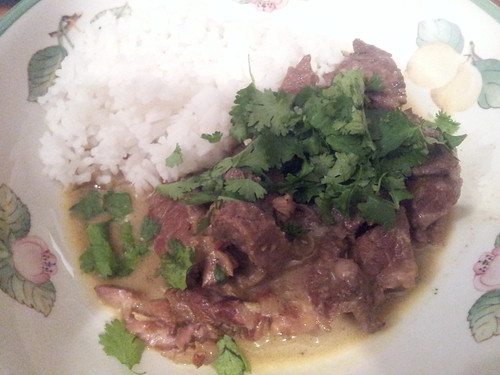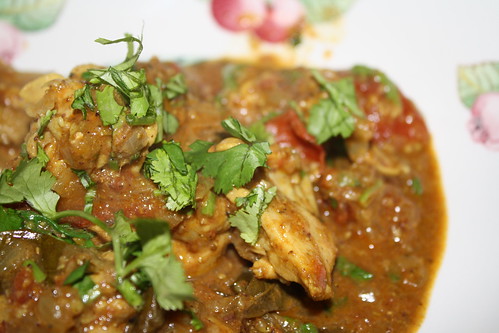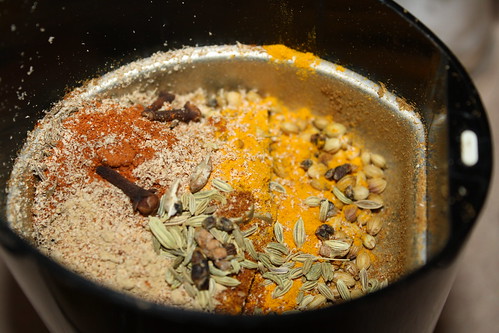
It’s true – curry is hard to photograph!
I’m sitting here sweltering: the thermometer has slid past 36°C yet again, and I’m hanging out for the cool change late this afternoon or early evening. Tomorrow’s forecast 29°C sounds almost chilly.
As I’m very much a winter person, I would like to swap with my mates in Leeds, who are currently enjoying temperatures just above 0°C. At least in that weather you can rug up, head to the pub for a cheeky pint and then tuck into a big curry. OK – you do have to dodge the icy footpaths (something I very definitely do NOT miss), but at least you feel like eating, which is the last thing on my mind right now!
Before temperatures took off, I made this beef rendang. The original recipe came from a 2003 Sainsbury magazine. As I no longer own the original I have no idea what tweaks may have taken place in 10 years. If you are familiar with rendang then you’ll notice that mine looks nowhere near authentic: I didn’t have the time to leave it cooking for long enough for the coconut milk to evaporate properly. It doesn’t matter: this still tastes fantastic!
Take 1kg of cubed beef and brown it in a large pan, in batches if necessary. Remove the beef and set aside.
In the same pan, add a little extra oil (use a flavourless oil, such as peanut) and brown a generous 2 tsp of grated ginger, 1 stalk of lemongrass, finely sliced, 1 onion, finely sliced and 6 cloves of garlic, crushed and chopped. Add 10 curry leaves (as I have these growing at home I always add even more because I love the flavour!), chilli to taste (either fresh birds eye chillis or chilli flakes), ½ stick cinnamon, 4 cloves, 5 green cardamom pods, 1 star anise, chilli powder (again, to taste – the original recipe states 1 tbsp but you really have to hold your nerve to use that much!), 1 tbsp turmeric, ½ tbsp ground coriander and ½ tbsp ground cumin.
Give this all a good stir fry and then add a 400mL tin of coconut milk and an additional 200mL of water. If you are in a hurry reduce the amount of coconut milk you use and omit the water – this will give you a thicker gravy without the long cooking time. Bring this mix to the boil and then add an additional stem or two of lemongrass (whole, but bruised).
Reduce the heat and return the meat to the pan. Simmer (very gently – if you let it boil now you’ll end up with super tough meat) for a couple of hours.
The longer you can let it simmer for the better: flavours will develop and the coconut milk will start to evaporate, leaving behind a dense, fudgy and quite dry curry, with beautifully tender meat.
Serve with rice, and garnish with fresh coriander.
Perfect for staving off a cold winter night in the northern hemisphere … and, if you put enough chilli in, great for working up a sweat here in the sweltering south of Australia!


